Trademark Oppositions In Vietnam: What Grounds And How To Effectively Apply?
Intellectual property rights (IPR) holders never want their competitors to register a mark closely resembling their own marks. This is to mitigate legal risks, particularly in preventing confusion among consumers and deterring unauthorized trademark use or free riding on their goodwill associated with their mark.
To mitigate these risks and safeguard the value of their brands and intellectual property in Vietnam, intellectual property rights holders must clearly understand the legal grounds for exercising the right to ”oppose” a trademark or to provide ‘third-party observation”, as outlined in Articles 112 and 112a of the amended 2022 IP Law. What legal grounds justify opposing a trademark application? How can these legal bases be effectively understood and applied? KENFOX IP & Law Office will offer analysis, interpretation, and practical examples to assist intellectual property rights holders in effectively utilizing the trademark opposition mechanism and third-party observation mechanisms in Vietnam to protect their legal rights.
1. Identical Or Confusingly Similar Trademarks
Earlier registered marks (Article 74.2e): A trademark application can be opposed if it is identical or confusingly similar to an earlier mark that is already protected for identical or similar goods or services. This includes marks registered in Vietnam and those filed under international treaties to which Vietnam is a party.
Earlier filing date (Article 90.2): Article 90.2 embodies the first-to-file principle, which accords protection to the trademark application that has the earliest filing date, provided it meets all the requisite conditions for protection. Therefore, if you have filed a trademark application before another party’s similar or identical trademark application, you may use this as a ground to oppose their application.
Widely-used and recognized unregistered marks (Article 74.2g): Unregistered trademarks that have become widely recognized can serve as grounds to oppose another’s earlier trademark application.
An opposition based on Article 74.2g illustrated in the below table:
| The adverse party’s applied-for mark | KENFOX client’s mark |
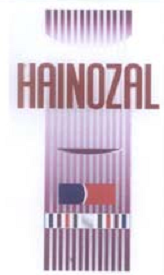 | 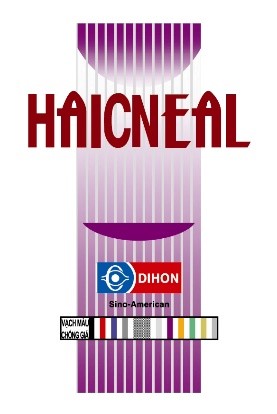 |
| KENFOX achieved a successful opposition against the registration of the “HAINOZAL + figurative element” trademark. This opposition was grounded in the substantial use of our client’s mark in commerce in Vietnam, even though (i) the verbal element “HAINOZAL” of the adverse party’s mark did not present significant similarity to the verbal element “HAICNEAL” ofour client’s mark, and (ii) the “figurative element” of our client’s mark was not officially registered in Vietnam. In this particular case, the Intellectual Property Office of Vietnam (IP VIETNAM) concluded that, given the extensive commercial usage and broad recognition of our client’s “HAICNEAL + figurative element” mark among Vietnamese consumers, it rejected the “figurative element” portion of the opposing party’s application based on our opposition, in accordance with Article 74.2(g). | |
Well-known marks (Article 74.2i): A well-known mark, as defined under Article 4.24, means a mark widely known by relevant members of the public throughout Vietnam’s territory. The owner of a well-known mark in Vietnam, regardless of its registration or unregistration, may file an opposition to a pending mark.
When challenging a new trademark application under Article 74.2(i), the opposer must demonstrate that the well-known status of their mark pre-dates the filing of the new application. Additionally, they must show either potential confusion due to similarity (for similar goods/services) or potential dilution or unfair advantage (for dissimilar goods/services).
A trademark opposition based on well-known status of a mark is provided in the table below:
| The adverse party’s mark | The client’s mark |
Trademark: Class: 05 (plant protection products: pesticide) Applicant: NICOTEX JSC
| Trademark: Class: 02 (Ink used for printers and photocopiers) 09 (Photocopiers) Owner: Xerox Corporation |
| Although (i) NICOTEX JSC’s applied-for trademark “XEROX” pertains to “plant protection products: pesticides” in Class 05, which are entirely different from the goods associated with “Ink used for printers and photocopiers” in Class 02 and “Photocopiers” in Class 09 under the trademark “XEROX” held by Xerox Corporation, and (ii) Xerox Corporation has never used the “XEROX” mark for products in Class 05 within the Vietnamese market, IP VIETNAM declined the registration of the former’s trademark based on the global renown of the latter’s mark. | |
Marks expired less than three years (Article 74.2h): Marks that have recently expired, but still within a three-year window (before Vietnam’s IP Law 2022, it was 5 years), can still form the basis for opposing pending trademark applications that are identical or confusingly similar. This mean despite its registration being lapsed, a less-than-3-year-expired mark continue to hold a residual protective shield for a duration of three years or a mark that has expired but are within a three-year grace period are still protected.
2. Trade Name Conflicts (Article 74.2k)
A trade name is protected in Vietnam without the need for filing or registration, whether or not it is part of a trademark. If a trade name has established rights through legitimate use in Vietnam, it is protected against unauthorized use of an identical or similar sign, whether used as a trade name or a trademark, if such use is likely to mislead the public. As a result, opposition can be filed against trademarks that are identical or similar to existing trade names with legitimate rights established in commerce in Vietnam. This ensures the protection of established business identities and prevents consumer confusion.
Some trade name-based oppositions against trademarks are provided in the the table below:
| The adverse party’s mark | The prior trade name |
Trademark 1: 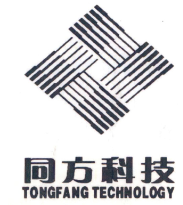 | Trade name 1: Shenzhen Tongfang Electric New Material Co., Ltd. |
Case 1: Shenzhen Tongfang Electric New Material Co., Ltd. (Tongfang) v. “TONGFANG TECHNOLOGY, Chinese characters, and device”. The owner of the trade name, Shenzhen Tongfang Electric New Material Co., Ltd. (Tongfang) submitted Opposition Notice No. PD4-2019-01290 on December 3, 2019, requesting IP VIETNAM to deny the trademark registration for “TONGFANG TECHNOLOGY, Chinese characters, and device”. This opposition was based on its similarity to the already widely used trade name “Tongfang” in Vietnam prior to the application date (August 6, 2019). IP VIETNAM, responding to this opposition, issued a notice on March 7, 2022, supporting Tongfang’s claim. Subsequently, on January 1, 2021, IP VIETNAM, through its substantive examination for Trademark Application No. 4-2019-29707, declined to grant protection to the trademark in question under Article 74.2k of the Intellectual Property Law. | |
Trademark 2: | Trade name 2: Ban Mai Tourism Co., Ltd. (English name: AURORA Travel Co., Ltd.) |
Case 2: Ban Mai Tourism Co., Ltd. (English name: AURORA Travel Co., Ltd.) lodged Opposition Notice No. PD4-2012-0057 on January 20, 2012, requesting IP VIETNAM to refuse registration for the mark “AURORA HOTEL & TRAVEL, device”. The opposition was based on its similarity with Ban Mai Tourism Co., Ltd.’s trade name (English name: AURORA Travel Co., Ltd.), extensively used in Vietnam before the trademark application date (September 7, 2011). On August 1, 2014, IP VIETNAM accepted this opposition and, on July 28, 2014, issued a notice for Trademark Application No. 4-2011-18522, refusing trademark protection under Articles 74.2(k) and 74.2(e) of the Intellectual Property Law. | |
| Trademark 3: | Trade name 3: LUXMAN KABUSHIKIKAISHA |
Case 3: LUXMAN KABUSHIKIKAISHA filed Opposition Notice No. PD4-2019-00616 on June 19, 2019, against the registration of the trademark “LUXMAN” due to its similarity with their trademark/trade name, widely utilized in Vietnam prior to the trademark application date (November 1, 2017). On September 4, 2020, IP VIETNAM issued a decision to reject the “LUXMAN” trademark in accordance with Articles 74.2(k) and 74.2(g) of the Intellectual Property Law. | |
Trademark 4:  | Trade name: Shenzhen Fenda Technology Co., Ltd. |
Case 4: Shenzhen Fenda Technology Co., Ltd. submitted an Opposition Notice against the registration of “FENDA electronics,” arguing its similarity with their trademark/trade name, in use in Vietnam before the application date (January 3, 2019). On May 27, 2021, IP VIETNAM concluded its substantive examination, refusing to protect “FENDA electronics” under Article 74.2k of the Intellectual Property Law. | |
3. Geographical Indication Infringement (Articles 74.2l and 74.2m)
If a trademark application is identified as potentially infringing upon a protected Geographical Indication (GI) as per these articles, it can be opposed. Under Article 74.2(l), a trademark application may be opposed if the mark is identical or similar to a protected GI and could mislead consumers about the geographical origin of the goods.
Article 74.2(m) specifically addresses trademarks related to wines and spirits. Under this article, opposition can be filed against trademarks that use, translate, or transcribe a GI pertaining to wines and spirits, especially if the products do not actually originate from the geographical areas indicated by those GIs.
In a case exemplified by the table below:
Ngan Anh Co., Ltd. applied to register the mark “ ” (BORDEUX M 25 WP Cop, device) for the goods in class 05 covering “Plant protection products (Fungicide)”. IP VIETNAM rejected the trademark application, citing, among other reasons, that “BORDEAUX” is the name of a French seaport, and its use may lead consumers to believe the products originate from there, causing potential confusion. ” (BORDEUX M 25 WP Cop, device) for the goods in class 05 covering “Plant protection products (Fungicide)”. IP VIETNAM rejected the trademark application, citing, among other reasons, that “BORDEAUX” is the name of a French seaport, and its use may lead consumers to believe the products originate from there, causing potential confusion. |
4. Industrial Design Infringement (Article 74.2n)
A trademark application in Vietnam can be opposed under Article 74.2(n) of Vietnam’s IP Law if it features a sign (such as a logo, shape, or symbol) that is either identical or insignificantly different from an already protected industrial design. The opposition is valid if the industrial design in question was filed for registration before the filing date of the trademark application.
Therefore, an opposition to the registration of a mark could be filed on the basis of an earlier design right, in particular where the shape of the trademark is identical or cannot be distinguished from the protected design. What should be further interpreted under Article 74.2(n) is that the design right may apply regardless of the goods for which a trademark would be registered.
5. Plant Variety Name Infringement (Article 74.2o)
If a sign (or trademark) is identical or confusingly similar to the names of plant varieties that are already protected in Vietnam, it can be a basis for opposing the trademark.
6. Copyrighted Material Infringement (Article 73.7 and 74.2p)
Article 73.7 of the Vietnam IP Law provides that signs (e.g., applied-for trademarks) containing copies of works are ineligible for trademark protection unless permitted by the owners of such works. This means that the owner of copyrighted works, which can include logos, artistic designs, or other creative expressions, has the right to oppose the registration of trademarks that directly copy or incorporate their copyrighted works without seeking the permission of the original creators. Essentially, Article 73.7 allows copyright owners to protect their intellectual property rights and prevent others from registering trademarks that infringe upon their copyrighted works.
Some copyright-based oppositions against trademarks are provided in the the table below:
| The adverse party’s mark | The prior copyright |
Trademark 1: 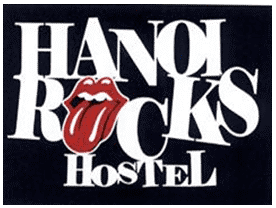 | Prior logo 1: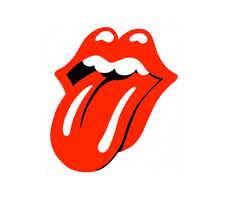 |
Case 1: Musidor B.V., the owner of the famous rock band “The Rolling Stone” who is the copyright owner of the logo “ ” with the common name “Tongue and Lips logo”. Musidor B.V. detected that a third party had applied for and used the logo “ ” with the common name “Tongue and Lips logo”. Musidor B.V. detected that a third party had applied for and used the logo “ ” for a hotel in Hanoi, Vietnam as well as in commercial activities, websites and social networking accounts such as Facebook, Instagram, YouTube, etc. without their permission. Musidor B.V. filed a Notice of Opposition against the third party’s trademark based on two grounds, (i) the mark “The Tongue and Lips logo” by Musidor B.V. is a well-known mark, widely used and known trademark, protected by trademarks in more than 50 countries around the world before the time the infringer files a trademark application in Vietnam and (ii) the infringer’s trademark contains the “Tongue and Lips logo” almost identical to Musidor B.V.’s logo qualified as a work of applied art and protected as copyright under Berne Convention to which Vietnam is a member. The Intellectual Property Office of Vietnam accepted Musidor B.V.’s opposition and refused registration of the infringer’s mark due to its confusingly similar to the applied art work “The Tongue and Lips logo” by Musidor B.V. according to Article 39.4(g) Circular No. 01/2007/TT-BKHCN. ” for a hotel in Hanoi, Vietnam as well as in commercial activities, websites and social networking accounts such as Facebook, Instagram, YouTube, etc. without their permission. Musidor B.V. filed a Notice of Opposition against the third party’s trademark based on two grounds, (i) the mark “The Tongue and Lips logo” by Musidor B.V. is a well-known mark, widely used and known trademark, protected by trademarks in more than 50 countries around the world before the time the infringer files a trademark application in Vietnam and (ii) the infringer’s trademark contains the “Tongue and Lips logo” almost identical to Musidor B.V.’s logo qualified as a work of applied art and protected as copyright under Berne Convention to which Vietnam is a member. The Intellectual Property Office of Vietnam accepted Musidor B.V.’s opposition and refused registration of the infringer’s mark due to its confusingly similar to the applied art work “The Tongue and Lips logo” by Musidor B.V. according to Article 39.4(g) Circular No. 01/2007/TT-BKHCN. | |
Case 2: In its ruling, IP VIETNAM rejected the adverse party’s trademark application. This ruling stemmed from an opposition lodged by Organo Company, contending that the adverse party’s proposed trademark bears a close resemblance to their own widely-used mark. Furthermore, two logos of Organo Company qualify for copyright protection in accordance with Article 39.4(g) of Circular No. 01/2007/TT-BKHCN. | |
This mechansim of preventing application of trademarks containing the protected work originate from the fact that: (i) Figurative and three-dimensional elements of trademarks can include artistic works that are specially created or commissioned for the purpose of creating a logo, label, or some other mixed trademark; (ii) These artistic works are protected by copyright law, which means that the creator (the artist) of these works holds the copyright to them; (iii) To use these artistic works as part of a trademark, the rights to the copyright must either be assigned (transferred) to the person or entity using the artwork in the trademark, or the copyright holder must grant a license to use the artwork in that specific context; (iv) In most cases, when someone commissions the creation of artwork for a logo or trademark, they typically own the economic rights to that artwork. This means they have the right to use it in the trademark as they see fit; and (v) However, in situations where the person or entity using the artwork in a trademark is not the copyright holder (for example, they didn’t commission the artwork or it’s a pre-existing work they picked up without authorization), the actual copyright holder (the artist or creator) has the legal right to take action against unauthorized use of their copyrighted work in a trademark.
Like the ground of “earlier industrial design right” as a ground for trademark opposition, in light of Article 73.7, the copyright holder has the legal right to oppose the registration of a trademark that includes their copyrighted work without obtaining the necessary permission. This opposition can be filed regardless of the goods or services for which the contested trademark is intended to be used. In other words, the copyright holder’s opposition is not limited by the type of products or services associated with the trademark; it is based on the unauthorized use of their copyrighted work.
In addition, under 74.2(p), if a pending trademark involves signs which are either identical or bear a confusing similarity to the names or images of characters or figures from copyrighted works, provided that are well-known to the public before the trademark application’s filing date, this similarity can be the basis for opposing the trademark registration in Vietnam.
The requirement that the character or figure must be “widely known to the public before the filing date” means that (i) Not all names or images of characters or figures from copyrighted works are eligible for trademark opposition. In other words, not every character or figure from a copyrighted work can be used as a basis to oppose a trademark in Vietnam. The character or figure in question must meet the criteria of being “widely known to the public before the filing date” of the trademark application; and (ii) To successfully file a trademark opposition based on this ground in Vietnam, the opponent must be able to substantiate that those characters or figures from copyrighted works that have achieved a significant level of public recognition are protected. In other words, the opposition can only be valid if the characters or figures in question have gained substantial public recognition and meet the criteria for being “well-known” figures.
7. Lack of Inherent Distinctiveness (Articles 73, 74.2a-d, & dd)
These articles (Articles 73, 74.2a-d, & dd) list the types of signs that are ineligible for protection as marks, mainly focusing on those lacking inherent distinctiveness due to their generic, descriptive, or misleading nature.
8. Non-entitlement to register a trademark (Article 87.2 and 87.7)
Article 87.2 provides a producer with the right to submit a Notice of Opposition in instances where a third party, like a distributor or a different organization, attempts to register a trademark for products linked to that producer. Specifically, should a producer discover that their distributor or marketer is seeking trademark registration with IP VIETNAM without their authorization, the producer is entitled to oppose this application. The basis for such opposition is the producer’s lack of consent for the trademark filing. In these circumstances, the producer can challenge the trademark’s registration by declaring their non-consent and objecting on those grounds
Under Article 87.7, if a representative or agent attempts to register a mark in Vietnam on behalf of the mark owner, and there is a treaty in place prohibiting such registration, the mark owner may have grounds to oppose the registration. The mark owner can argue that the registration is not permitted under the treaty, unless they have provided consent or there is a justifiable reason for the registration. Vietnam is a signatory to several international agreements and treaties related to trademarks and intellectual property rights such as Paris Convention for the Protection of Industrial Property; TRIPS Agreement (Agreement on Trade-Related Aspects of Intellectual Property Rights); Madrid Agreement Concerning the International Registration of Marks; Madrid Protocol (Madrid System); Bilateral and Regional Trade Agreement (e.g., the United States-Vietnam Bilateral Trade Agreement, and the Comprehensive and Progressive Agreement for Trans-Pacific Partnership (CPTPP); EU–Vietnam Free Trade Agreement (EVFTA); Regional Comprehensive Economic Partnership (RCEP))
9. Bad Faith of Applicant (Article 187.2)
A third party who believes that the applicant is seeking trademark protection with bad intentions or in bad faith can file a trademark opposition in Vietnam. “Bad faith” is understood as the situation where an applicant knows that the mark that is applied for registration already belongs to another person who has a genuine claim to that mark and has not consented to such registration.
The interpretation of “Bad Faith” as a ground for challenging trademark application or registration is specified in Point 34.2 of Circular No. 23/2023/TT-BKHCN, which came into effect on 30 November 2023. Accordingly, the applicant would be considered to have acted “in bad faith” if the presented evidence fulfills both of the following criteria:
a, At the time of filing the application, the applicant either knows or has reasonable grounds to know that his/her applied-for trademark is identical or confusingly similar to other person’s trademark that is widely used in Vietnam, or become famous in other countries, designated for identical or similar goods or services; and
b, The applicant’s trademark registration‘s motive behind the trademark registration is to take advantage of (capitalize on) the reputation or goodwill of the other person’s trademark for profit (monetary gains), or mainly for the purpose of reselling, licensing or transferring registration rights to the other person whose trademark is widely used in Vietnam, or recognized as well-known trademark in other countries, or with the goal of preventing the other person from entering the market, or conducting other behaviors contrary to fair commercial practices.
Awareness of the mark can stem from various sources, including the mark’s recognition in Vietnam or internationally, or its established reputation within Vietnam. Additionally, knowledge of the mark may be established if the applicant has had a prior connection or business relationship with the owner of the mark they are attempting to register. This connection could be evidenced through past correspondence or negotiations between the relevant parties.
Final thoughts
In conclusion, winning in a trademark opposition in Vietnam depends on more than just presenting strong evidence; it’s about coupling this evidence with a profound understanding of the grounds for challenging a third party’s mark. Genuine trademark owners, by skillfully blending strong evidence with astute, statute-based arguments, can significantly increase their chances of securing favorable decisions from IP VIETNAM in the context of increasingly complex trademark disputes in Vietnam.
Reach out to KENFOX if you require our professional advice on trademark oppositions in Vietnam.
Partner & IP Attorney
Related Articles:
- Opposing and defending the grant of trademark registration; and Filing a cancellation and/or termination action against a Trademark Registration
- Filing an opposition or a third party observation in Vietnam: Which option is better?
- What To Do if Your Trademark has been Stolen in Vietnam?
- At a glance: Trademark Opposition in Vietnam
- Bad faith (Malicious) – a legal basis for trademark opposition or invalidation in Vietnam
- How to Successfully Argue Wide Use Evidence in Trademark Opposition and Cancellation Cases in Vietnam?
- Registering a Trademark in Bad Faith in Vietnam: How to Prove the Applicant’s Intentions and Motives
- Bad Faith – The Secret to Proving Bad Faith and Regaining the Trademark in Vietnam
- Taking Advantage of the Reputation of the Legitimate Trademark Owner: How to Prove?
- Overcome a provisional refusal against an International Registration Designating Vietnam – difficult but never give up!
- Approaches to overcome a refusal of a trademark application that is identical or similar to an expired mark in Vietnam

